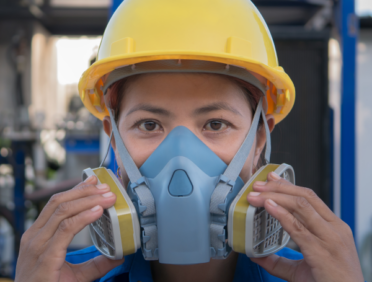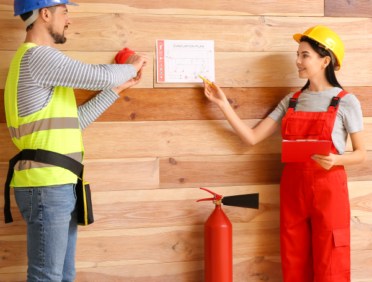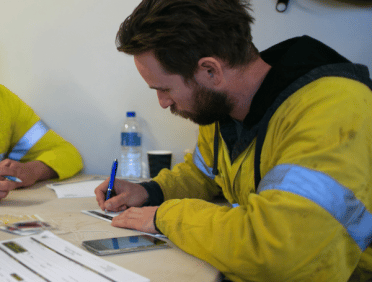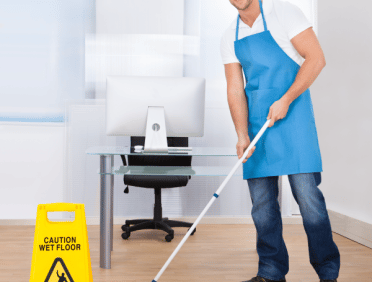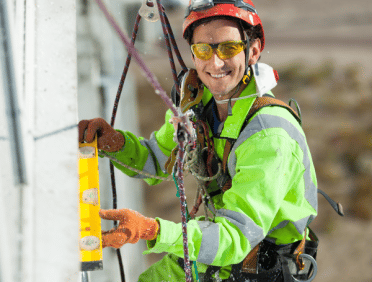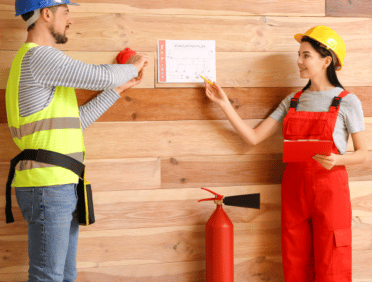Filter by
Fire Safety in the UK: Essential Guidelines for Protection
Both residential and commercial properties in the United Kingdom must address the important issue of fire prevention. It is possible to save lives, prevent injuries, and reduce property damage by gaining an understanding of fire safety practices and employing them. One of the most important aspects of your fire safety strategy should be the emergency protocols, preventative measures, and legislation that pertain to fire safety and are specific to the United Kingdom.
It takes everyone to be vigilant, well-prepared, and to follow the laws when it comes to fire safety. People and organisations may significantly reduce the risk of fire and ensure a safer environment for everyone by understanding and implementing the above-listed suggestions. It takes regular assessments and revisions of fire safety protocols to keep them compliant and ready.
Understanding UK Fire Safety Regulations
The Regulatory Reform (Fire Safety) Order 2005
Primarily, the Regulatory Reform (Fire Safety) Order 2005 governs fire safety in the United Kingdom. Under this law, the “responsible person,” typically the owner, employer, or occupier, is in charge of making sure that fire hazards are evaluated and controlled.
Key requirements include:
- Conducting a fire risk assessment.
- Implementing fire safety measures.
- Ensuring proper maintenance of fire safety equipment.
- Training staff in fire safety procedures.
Local Authority and Fire Brigade Inspections
Inspections by local fire departments guarantee adherence to fire safety rules. For noncompliance with these inspections, enforcement proceedings, including penalties or prosecution, may follow.
Preventive Measures
Fire Risk Assessment
Good fire safety starts with a fire risk assessment. This entails identifying possible fire risks, ascertaining who could be in danger, and assessing how well the current fire safety protocols work. Regular reviews and updates of the assessment are advised.
Fire Safety Equipment
When it comes to early fire detection and suppression, having fire safety equipment that is properly maintained is really necessary.
Included in the essential equipment are:
- Smoke alarms and heat detectors.
- Fire extinguishers.
- Fire blankets.
- Fire doors and fire-resistant materials.
Electrical Safety
Typical causes of flames are problems with the electrical system. It is possible to avoid mishaps of this nature by performing routine inspections and maintenance on electrical appliances and systems. Employing the services of a trained electrician to perform inspections on electrical systems is recommendable.
Emergency Procedures
Fire Evacuation Plan
Each and every property ought to have a fire evacuation strategy that is both obvious and well-practiced.
This strategy ought to incorporate:
- Clearly marked escape routes.
- Designated assembly points.
- Regular fire drills.
- Procedures for assisting individuals with mobility issues.
Using Fire Extinguishers
Controlling smaller fires before they become more serious can be accomplished by providing residents with training on how to properly utilise fire extinguishers. Extinguishers come in a variety of types, including water, foam, and carbon dioxide, and it is essential to select the appropriate one for each sort of fire.
Special Considerations for Residential Properties
Landlord Responsibilities
There are certain fire safety duties that landlords are required to fulfil in accordance with the Housing Act of 2004 and other related legislation.
In order to guarantee:
- Installation and maintenance of smoke alarms on each floor.
- Regular testing and maintenance of electrical and gas installations.
- Provision of fire safety information to tenants.
Homeowners’ Best Practices
As an additional measure to improve fire safety, homeowners should adopt preventative measures such as the following:
- Regularly testing smoke alarms.
- Creating and practicing a home evacuation plan.
- Storing flammable materials safely.
Frequently Asked Questions (FAQs)
The Regulatory Reform (Fire Safety) Order 2005 is the primary legal document that governs the conditions that must be met in order to ensure fire safety in the workplace in the United Kingdom.
This legislation mandates that employers and owners of premises must:
- Conduct a fire risk assessment and regularly review it.
- Implement appropriate fire safety measures based on the assessment.
- Develop an emergency plan and inform employees about it.
- Provide fire safety training to employees.
- Ensure fire safety equipment is installed and maintained, including fire alarms, extinguishers, and emergency lighting.
- Display fire safety signs and ensure clear, unobstructed escape routes.
On the first day of employment, as well as at regular intervals thereafter, you should get instruction on fire safety. Although there is no formal legal regulation regarding the frequency of refresher training, it is generally advised that it be conducted annually or whenever there are significant changes to the personnel, processes, or workspace.
In order to guarantee that staff continue to be informed of fire safety protocols and are able to respond rapidly in the event of an emergency, regular exercises and updates are conducted.
The main components of a fire risk assessment include:
- Determining the potential sources of ignition, fuel, and oxygen that could cause a fire.
- Identify those who may be in danger, including employees, visitors, and anybody else who might be impacted by the situation.
- Assessing and mitigating risks (including the implementation of actions to eliminate or lessen the effects of fire dangers and risks to individuals).
- Recording results and formulating an emergency plan.
- Informing and instructing those who are significant.
- The risk assessment should be reviewed and updated on a regular basis, or if there are substantial changes or updates.
The term “responsible person” is commonly used to refer to the individual who is accountable for conducting fire risk assessments in firms located in the United Kingdom. The employer, the owner, or any other individual who has responsibility over the premises, such as a facilities manager, can be considered this candidate.
It is the responsibility of the person in charge to make certain that the evaluation is comprehensive and up-to-date, and they have the option of appointing a knowledgeable person to assist them in this endeavour.
A fire emergency plan, according to UK regulations, should include:
- The actions that personnel should take in the event that they discover a fire.
- Find out how to sound the alarm and get in touch with the emergency services.
- steps to take in order to safely evacuate the building, including exits and routes.
- What are the procedures for checking attendance, and where are the assembly points located?
- What information is available regarding firefighting equipment, and who is trained to use it?
- Particularly vulnerable people, such as those with impairments, are provided with special accommodations.
- Procedures to be followed in order to communicate with the fire department once they arrive.
There is a possibility that regulatory organisations in the United Kingdom will acknowledge online fire safety courses, provided that these courses meet the necessary requirements and learning outcomes. The Regulatory Reform (Fire Safety) Order 2005 mandates that employers make sure that reliable providers are offering online courses that cover all of the essentials of fire safety.
It is essential that staff comprehend the training and are able to integrate it into real-world situations.
Business organisations can ensure that they are in conformity with the Regulatory Reform (Fire Safety) Order 2005 by performing fire risk assessments on a regular basis and acting on the results of those assessments.
- Implementing and maintaining the necessary fire safety measures and equipment is extremely important.
- In the event of a fire emergency, develop and communicate a strategy.
- It is important to provide frequent training on fire safety to all personnel.
- All fire safety actions, such as training, exercises, equipment maintenance, and risk assessments, should be documented and kept safe.
- Keep abreast of any changes that may occur in the regulations and best practices pertaining to fire safety.
It is possible to face serious consequences in the United Kingdom for failing to comply with regulations concerning fire safety.
These consequences may include the following:
- Businesses that are found to be in violation of the standards may be liable to hefty financial penalties in the form of fines if they are determined to meet the requirements.
- Under extreme circumstances, such as when negligence leads to major injury or death, there is a possibility that the person who is responsible for the incident could be sentenced to imprisonment.
- Alerts regarding the enforcement of laws: It is within the authority of the authorities to issue notices that demand that specific actions be carried out within a specified amount of time in order to resolve the issue of non-compliance.
- In accordance with the ban notifications, it is feasible to either entirely or partially shut down the premises until the fire safety standards are satisfied.
Training professionals in the field of fire safety in the United Kingdom should have the appropriate qualifications and experience in the field. The Level 3 Award in Fire Safety (Fire Auditors) or the Level 3 Award in Fire Safety Risk Assessment and Control are two examples of what are considered to be common certifications.
- The National Examination Board in Occupational Safety and Health (NEBOSH) and the Institution of Fire Engineers (IFE) are two examples of organisations that offer training that have received accreditation from these organisations.
- Practical experience in the management of fire safety, risk assessment, and emergency preparedness.
- It is important to engage in ongoing professional development in order to be current with the latest legislation and best practices.
It is true that fire safety courses can be tailored to certain industries, and this is something that should be done in order to handle the distinct dangers and requirements required by various workplace situations. Customisation guarantees that the training is applicable and efficient, encompassing hazards that are specific to the business, legal duties, and best practices with regard to the industry.
As an illustration, a fire safety course designed for a manufacturing plant will concentrate on the management of combustible materials and machinery, whereas a course designed for an office setting might place more of an emphasis on electrical safety and emergency evacuation protocols.
A fire warden, who is often referred to as a fire marshal, is an individual who plays an essential part in ensuring that the workplace is safe from fire. They are responsible for a variety of tasks, including conducting routine fire safety inspections and reporting potential dangers.
- Assisting in the creation and implementation of fire emergency plans.
- Making sure that escape routes are available and unobstructed.
- In both fire drills and actual situations, taking charge of and directing evacuations is essential.
- Assuring that each and every person is there at the designated gathering spot.
- communicating with emergency services once they have arrived at the scene.
- Making sure that personnel receive training and direction regarding fire safety.
Businesses in the United Kingdom ought to carry out fire drills on a yearly basis, at the very least. In spite of this, it is possible that more regular drills will be required, depending on the particular dangers and the number of people present at the location. In the event of an emergency, it is important to conduct regular exercises to ensure that all personnel are familiar with the protocols for evacuating the building and are able to respond swiftly and effectively.
The different types of fire extinguishers and their uses are:
- Water Extinguishers: Suitable for Class A fires involving solid combustibles such as wood, paper, and textiles.
- Foam Extinguishers: Effective on Class A and B fires involving flammable liquids like gasoline and paint.
- Dry powder extinguishers are versatile and can be used on Class A, B, and C fires, including flammable gases and electrical fires.
- CO2 Extinguishers: Ideal for electrical fires and Class B fires involving flammable liquids.
- Wet Chemical Extinguishers: Designed for Class F fires involving cooking oils and fats.
Conducting a fire risk assessment and putting the required precautions into place are two ways in which small businesses can ensure that they are in compliance with fire safety requirements.
- Making sure that every employee receives training on fire safety.
- Fire safety equipment, including alarms, extinguishers, and emergency lighting, must be installed and maintained in accordance with the required standards.
- In the event of a fire emergency, develop and communicate a strategy.
- The maintenance of well-marked and unobstructed fire exits.
- It is important to perform routine reviews and updates on fire safety procedures and equipment.
Maintaining clean and clutter-free work places, especially those that include combustible items, is one of the measures that may be taken to reduce the risk of fires occurring in the workplace.
- To ensure that hazardous substances are stored and handled in the appropriate manner.
- Performing routine checks and maintenance on electrical pieces of equipment.
- A policy that prohibits smoking or designated smoking locations that are located away from flammable objects should be implemented.
- Carrying out risk assessments and fire safety inspections on a regular basis.
- Providing staff with training on fire safety and ensuring that they are aware of potential hazards and safety procedures and requirements.
The following procedures are normally required in order to obtain a certification in fire safety in the United Kingdom:
- carried out by a competent individual or organisation, a thorough evaluation of the potential for fire.
- Following the findings of the evaluation, put into action the essential fire safety measures.
- Instruction in fire safety is being provided to staff members.
- Performing routine maintenance and inspections on the fire safety equipment.
- submitting an application for certification through a recognised authority, such as the National Examination Board in Occupational Safety and Health (NEBOSH) or the Institution of Fire Engineers (IFE), for example.
- Conducting an audit or inspection by the certifying body in order to ensure compliance with the requirements.
Fire alarms, extinguishers, emergency lighting, and sprinkler systems should all be subjected to routine inspections and tests in order for businesses to provide adequate maintenance for their fire safety equipment.
- Maintaining comprehensive records of all inspections and actions related to maintenance.
- In accordance with the recommendations of the manufacturers and the requirements of the law, when necessary, replace or maintain the equipment.
- Ensuring that duly certified, trained individuals or contractors carry out maintenance operations.
- Reviewing maintenance schedules on a regular basis to verify that all of the equipment is in good working order.
Employees are required to quickly raise the alarm by using the fire alarm call point that is located closest to them in the event that they detect a fire.
- If you have received training and it is safe to do so, you should make an effort to put out the fire by using a fire extinguisher.
- Take the nearest safe exit out of the building, and avoid using lifts while you evacuate the premises.
- Assemble at the location that has been designated as the meeting point, and do not return to the building until the fire department has determined that it is safe to do so.
- Follow the emergency plan for the fire, and if necessary, help other people leave the building.
The following are some of the regulations for fire exit signage in the United Kingdom:
- In order to indicate the direction of escape routes, signs need to be readable and easily seen.
- The placement of signs at regular intervals along escape routes is recommended in order to direct them to the exit that is closest to them.
- In order to ensure visibility in low-light or smoke-filled environments, fire escape doors should feature signage that is either glow-in-the-dark or photoluminescent.
- The Health and Safety (Safety Signs and Signals) Regulations 1996 provide requirements for the design, colour, and placement of fire safety signs. All signs must adhere to these rules.
- Signs should be kept clear of obstructions and maintained on a regular basis to ensure that they continue to be effective.
The Housing Act of 2004 and the Regulatory Reform (Fire Safety) Order of 2005 are the two primary pieces of legislation in the United Kingdom that pertain to fire safety and have an impact on residential premises that are rented out. Among the most important requirements are:
- Smoke Alarms and Carbon Monoxide Detectors: Landlords must ensure that smoke alarms are installed on each floor of the property and carbon monoxide detectors in rooms with solid fuel appliances.
- Fire Risk Assessment: Landlords of Houses in Multiple Occupation (HMOs) must conduct fire risk assessments and implement necessary measures to mitigate fire risks.
- Escape Routes: Landlords must ensure that escape routes are accessible and free of obstructions. Fire doors must be installed and maintained where required.
- Furniture and Furnishings: All furniture and furnishings provided by the landlord must comply with fire safety standards.
- Electrical Safety: Regular checks and maintenance of electrical installations and appliances must be carried out to prevent electrical fires.
Typically, the following components are included in an inspection of fire safety:
- Review of Fire Risk Assessment: Examination of the current fire risk assessment to ensure it is comprehensive and up-to-date.
- Inspection of Fire Safety Measures: Checking the adequacy and condition of fire alarms, extinguishers, emergency lighting, and fire doors.
- Evaluation of Escape Routes: Ensuring that all escape routes are clearly marked, unobstructed, and well-maintained.
- Review of Fire Safety Records: Checking maintenance records, training logs, and fire drill documentation.
- Assessment of Fire Safety Training: Verifying that employees or residents have received appropriate fire safety training and understand emergency procedures.
- Compliance Check: Ensuring all fire safety measures comply with relevant legislation and regulations.
Make sure to follow these measures in order to get ready for a fire safety inspection:
- Review and Update Fire Risk Assessment: Ensure your fire risk assessment is current and accurately reflects the premises.
- Conduct Internal Inspections: Regularly check fire alarms, extinguishers, emergency lighting, and fire doors to ensure they are in good working order.
- Clear Escape Routes: Make sure all escape routes are free from obstructions and clearly marked with signage.
- Maintain Records: Keep detailed records of fire safety checks, maintenance activities, training sessions, and fire drills.
- Train Employees: Ensure all staff are familiar with fire safety procedures and have received appropriate training.
- Prepare Documentation: Have all relevant documentation, including the fire risk assessment, maintenance logs, and training records, readily available for the inspector.
High-rise buildings must adhere to precise fire safety regulations in the United Kingdom. This is especially true in light of the Grenfell Tower catastrophe and the ensuing reviews. Among the most important requirements are:
- Sprinkler Systems: High-rise residential buildings over 18 metres (or six stories) must have sprinkler systems installed.
- Fire Doors: Fire doors must be installed and maintained to compartmentalise the building and prevent the spread of fire and smoke.
- Cladding and External Materials: Materials used in the construction and renovation of high-rise buildings must meet strict fire safety standards to prevent rapid fire spread.
- Emergency Signage and Lighting: Clear and illuminated signage must be provided for escape routes, and emergency lighting must be installed.
- Regular Inspections and Maintenance: High-rise buildings must undergo regular fire safety inspections and maintenance checks.
- Resident Information: Building owners must provide residents with information on fire safety procedures and evacuation plans.
Individuals can increase their knowledge about fire safety by doing the following:
- Attending Fire Safety Training: Participating in fire safety courses provided by reputable training organisations.
- Reading Guidance Documents: Reviewing official guidance documents and resources from government bodies such as the UK Fire and Rescue Service.
- Engaging with Online Resources: Accessing online courses, webinars, and informational websites dedicated to fire safety.
- Participating in Fire Drills: Actively participating in fire drills at work or in residential buildings to better understand evacuation procedures.
- Consulting Fire Safety Professionals: Seeking advice and information from certified fire safety professionals.
Some of the resources that are accessible for further education regarding fire safety requirements are as follows:
- Government Websites: The UK government’s official fire safety resources and guidance can be found on websites such as GOV.UK.
- Fire and Rescue Service Websites: Local fire and rescue services often provide valuable information and resources on fire safety.
- Professional Bodies: Organisations such as the Institution of Fire Engineers (IFE) and the National Examination Board in Occupational Safety and Health (NEBOSH) offer courses, qualifications, and resources.
- Health and Safety Executive (HSE): The HSE provides comprehensive guidance on fire safety regulations and best practices.
- Industry Associations: Various industry associations offer specialised fire safety resources tailored to specific sectors.
- Online Learning Platforms: Websites such as Learn Q offer courses on fire safety and related topics.






